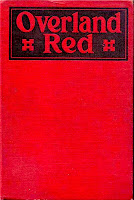 |
| Montana cowboys, c1910 |
Here’s another set of terms and forgotten people gleaned
from early western fiction. Definitions were discovered in various online
dictionaries, as well as searches in
Cassell’s Dictionary of Slang,
Dictionary of the American West, The New Encyclopedia of the American West, The
Cowboy Dictionary, The Cowboy Encyclopedia, Vocabulario Vaquero, I Hear America
Talking, Cowboy Lingo, and The
Shorter Oxford English Dictionary.
These are from Francis Lynde’s The Grafters, William MacLeod Raine’s Wyoming, and Harry Leon Wilson’s The Lions of the
Lord. Once again, I struck out on a few. If
anyone has a definition for “send someone over the road,” “beat up the
scenery,” “hill steer,” “bye-low land,” or “party call,” leave a comment below.
across the divide =
long gone; gotten rid of. “Hadn’t been for
her these boys would have been across the divide hours ago.” William MacLeod
Raine, Wyoming.
 |
| Balaam and the angel |
Balaam’s burro =
a biblical beast of burden who, after a
startling encounter with an angel, develops powers of speech. “There is one
difference between you and Rabbi Balaam’s burro, David: it could talk sense,
and you can’t.” Francis Lynde, The Grafters.
burn the wind =
to ride fast, make haste. “No use
buck-jumpin’ along to burn the wind while they drill streaks of light through
us.” William MacLeod Raine, Wyoming.
caplock = a muzzle-loading firearm, using a small metal
percussion cap, which is struck by the hammer, creating a flash which ignites
powder. “If the gun was a caplock, the cap was to be taken off and a piece of
leather put on to exclude moisture and dirt.” Harry Leon Wilson, The Lions
of the Lord.
 |
| Berdan Sharps rifle |
cipher = to calculate, think out. “Glad to hear of it. I’ll
cipher out somehow to be there.” William MacLeod Raine, Wyoming.
crown sheet =
the upper sheet and hottest part of the
inner firebox on a locomotive boiler. “There is about one chance in a thousand
that Callahan’s crown-sheet won’t get red-hot and crumple up on him in the last
twenty miles.” Francis Lynde, The Grafters.
diamond hitch =
a kind of knot used to fasten one thing
temporarily to another; a common method of roping a pack on an animal. “I’ve a
notion those boys are sufferin’ for a woman to put the diamond-hitch on them
bandages.” William MacLeod Raine, Wyoming.
drop light =
a portable gas lamp attached to the gas
pipe by a flexible tube; an electric light suspended from the ceiling. “The
judge pressed the button of the drop-light and waved his visitor to a chair.”
Francis Lynde, The Grafters.
dumping bar =
a device for removing ash and clinker from
the fire grate of a locomotive steam engine. “While they wrestle with the
dumping-bar, these two, the poising figures have swarmed upon the Naught-seven,
and a voice is lifted above the Babel of others in sharp protest.” Francis
Lynde, The Grafters.
dust cutter =
an alcoholic drink. “The ball’s about to
open. Pardners for a waltz. Have a dust-cutter, Mac, before she grows warm.”
William MacLeod Raine, Wyoming.
Dutch courage =
false bravery, fortified by alcohol. “This
assurance lent an added braggadocio to the Dutch courage of the lynchers.”
William MacLeod Raine, Wyoming.
flapper = the arm, hand. “Y’u see, I get him in the flapper
without spoiling him complete.” William MacLeod Raine, Wyoming.
flintlock =
a muzzle-loading firearm, using flint and
steel to create a shower of sparks, which ignites the powder. “If a flintlock,
the filling was to be taken out and the pan filled with tow or cotton.” Harry
Leon Wilson, The Lions of the Lord.
for fair =
completely, absolutely, altogether. “The
way y’u straddle them high notes is a caution for fair.” William MacLeod Raine,
Wyoming.
French Fours =
a country dance. “There were French Fours,
Copenhagen jigs, Virginia reels,—spirited figures blithely stepped.” Harry Leon
Wilson, The Lions of the Lord.
go to grass =
a dismissive exclamation demanding that
someone leave or suggesting that they are talking nonsense. “Y’u go to grass,
Mac. I don’t aim to ask y’u to be my valley yet awhile.” William MacLeod Raine,
Wyoming.
go to Halifax =
a mild oath for “go to hell.” “‘Y’u go to
Halifax,’ returned Mac genially over his shoulder as he loped away.” William
MacLeod Raine, Wyoming.
jarred up =
shaken, surprised. “I reckon I never did
get jarred up so. It’s plumb discouraging.” William MacLeod Raine, Wyoming.
 |
| J. M. Barrie, 1901 |
Little White Bird, The = a novel by
Scottish author and dramatist J. M. Barrie (1860-1937), published in 1902.
“Helen was sitting beside him in an easy chair, and he watched the play of her
face in the lamplight as she read from ‘The Little White Bird’.” William
MacLeod Raine, Wyoming.
lo-the-poor-Indian =
a reference to 18th century English poet
Alexander Pope’s Essay on Man: “Lo! The poor Indian, whose
untutored mind sees God in the clouds, or hears him in the wind.” “Denver, I’ll
take care of these beauties while y’u step into the pantry with Mrs.
Lo-the-poor-Indian and put up a lunch.” William MacLeod Raine, Wyoming.
mast = the fruit of beech, oak, chestnut, and other forest
trees, used as food for pigs and wild animals. “We lived on mast and corn, the
winter, in tents and a few dugouts and rickety huts.” Harry Leon Wilson, The
Lions of the Lord.


































